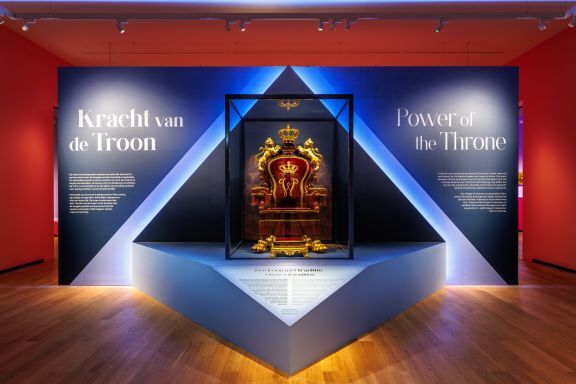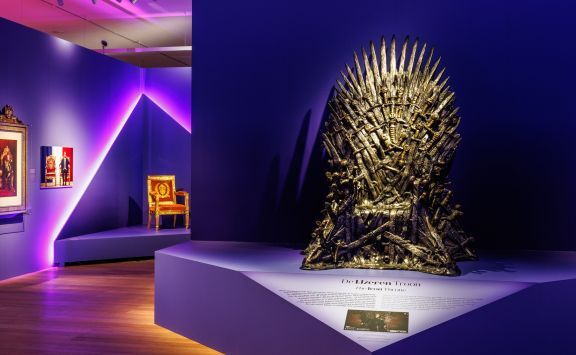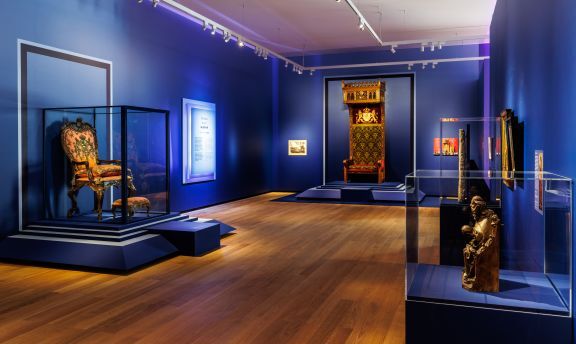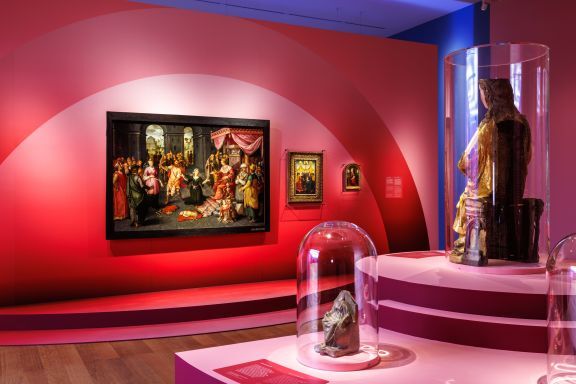
The Throne: A Symbol of Power
The throne is a remarkable piece of furniture: a chair exclusively reserved for the highest authority, be it royal or divine. The connection between the throne and power is so strong that the object and the concept merge. While forms and meanings may vary, the throne has universally served as a potent symbol of authority, whether political, moral, or personal, across different cultures and eras.
The image of the throne is colored by films, series, fairy tales, and legends—royal, imposing, and seemingly out of time. However, the throne represents much more than that. 'Power of the Throne' tells the story of the highest position and how everyone relates to it.

The Irone Throne, Game of Thrones, HBO Max
Highlights from the Exhibition
A Throne with Tradition - This is the throne on which Wilhelmina was inaugurated as the first queen of the Netherlands at the age of eighteen. Wilhelmina consciously chose this throne, emphasizing the continuity of the Orange dynasty. This throne was originally made by the firm Horrix, The Hague, for her father, King Willem III, in 1849. He inherited this armchair from his father, King Willem II. The chair was transformed into a throne during Wilhelmina's inauguration, exclusively reserved for the highest in rank: the king or queen. After Wilhelmina's inauguration, the throne was never used again.
(Firma Horrix, The Hague / Converted into a throne in 1849 / Mahogany, silk, and gold thread / Rijksmuseum collection, on loan from the Royal Collections, The Hague)
The Iron Throne - "When you play the game of thrones, you win or you die. There is no middle ground," says the main character Cersei Lannister in Game of Thrones. This fantasy series revolves around the struggle for the Iron Throne and power over the Seven Kingdoms. The throne is made from the swords of defeated enemies, symbolizing conquest. The forged weapons make it an uncomfortable throne because a ruler can never lean back carelessly. Staying in power is never guaranteed.
(Replica / Museum Beeld & Geluid collection, Hilversum)
The Throne of the Netherlands - the throne from the Ridderzaal in The Hague. Every year, King Willem-Alexander reads the Speech from the Throne, sitting on this throne. Prinsjesdag (Prince's Day) is the only day he occupies a throne. This seat symbolizes the king or queen as the head of the government. Architect Pierre Cuypers designed the throne in the neo-Gothic style, fitting for the medieval Ridderzaal.
(Pierre Cuypers / 1904 / Oak, velvet, gold thread / State Property and Heritage Agency)
The Power of Wisdom - Small in size but rich in color and detail, this depiction of Mary shows her sitting on an impressive throne against a fantasy landscape. The portrayal represents Mary as the Seat of Wisdom. She wears a deep red mantle. This color is not coincidental. In Western European art, red symbolizes the power of popes and kings. For Mary, it signifies the power of wisdom and moral authority.
(Adriaan Isenbrant / ca. 1530 / Oil on panel / Museum Boijmans van Beuningen collection, Rotterdam)
The exhibition will be on display from October 14th to March 10th, 2024.

